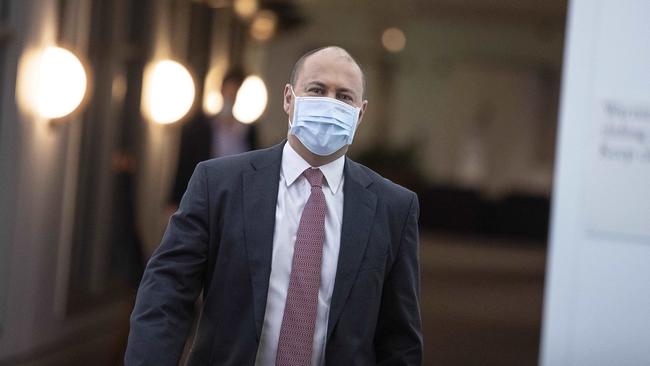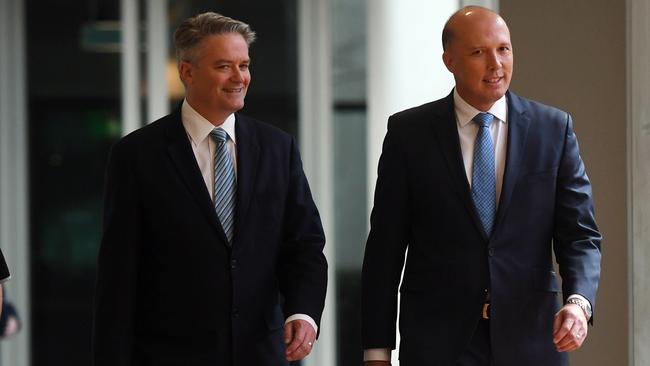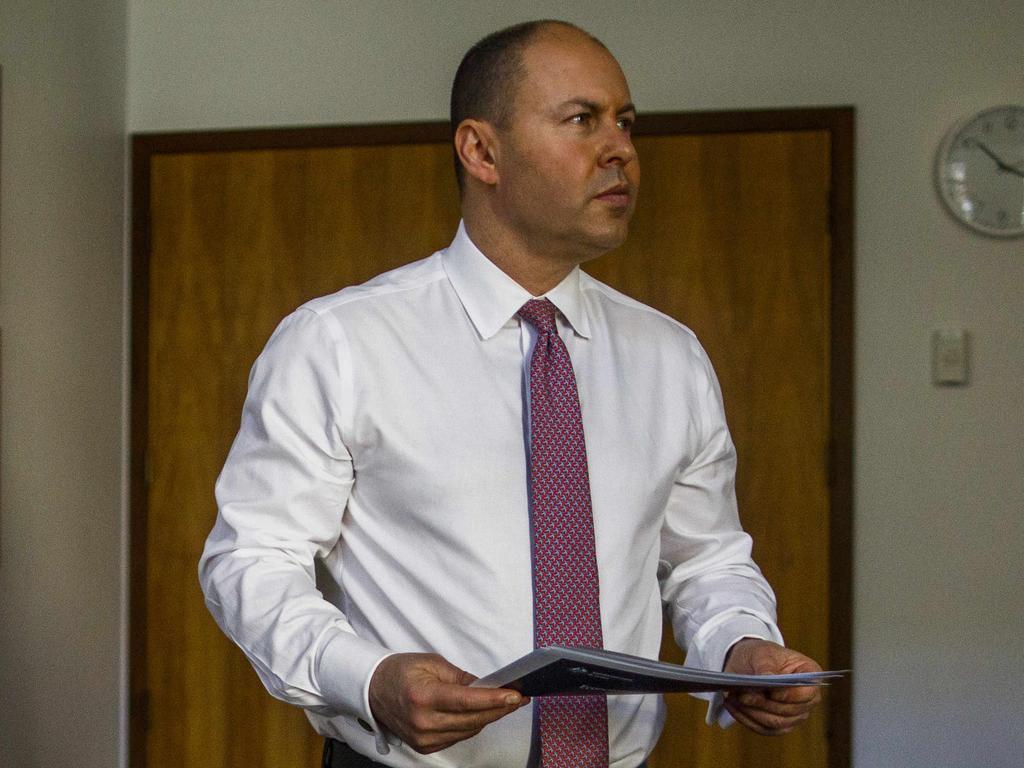So much healing awaits us once this sickness has passed
Historians will look back on a relatively small pandemic by historical standards but one marked by an extraordinary recession, the deepest since the 1930s.

The deep “economic scarring” Reserve Bank Governor Philip Lowe warned of this week, referring in particular to chronically high unemployment, will last many years, long after the virus has petered out.
This week’s budget update, the first since December, has revealed the immediate scale of the damage across one dimension — public finances.
The federal government’s debt alone will soar beyond $850bn by next year as World War II-sized budget deficits push net debt as a share of GDP almost to 36 per cent. Australia’s public balance sheet is coming to look more like those in other G20 nations, where the typical debt burden has surged from around 80 per cent to 100 per cent of GDP.
However abstract it all might seem, this ultimately affects every taxpayer in the nation, especially younger ones, who are likely to be earning less to boot.
“Australians graduating into a labour market with high youth unemployment can expect to earn roughly 8 per cent less in their first year of work, and 3½ per cent less after five years,” Treasurer Josh Frydenberg said in a major speech in Canberra on Friday.
Additional direct spending of $164bn over two years to offset the surge in joblessness has combined with a slump in revenues of around $90bn and is forecast to produce a deficit of $185bn this financial year, a wild turnaround from the $6bn surplus the government had pencilled in back in December.
The government expects the official jobless rate to exceed 9 per cent by Christmas, but the true rate will be much higher than the peak unemployment rate of just over 11 per cent reached in the recession of the early 1990s.
It could all get worse if there are further outbreaks. The Treasury update was predicated on restrictions lifting in Victoria and no further state lockdowns.
The economic damage globally is worse. “The World Bank expects more economies to experience contractions in per capita GDP than at any other time since 1870. The OECD is forecasting a contraction of 6 per cent in global growth this calendar year, compared to an annual fall of just 0.1 per cent during the GFC,” the Treasurer said.
According to the International Labour Organisation, the equivalent of around 480 million full-time jobs were lost around the world between March and June, despite total spending by G20 governments of $US11 trillion ($15.5 trillion) to bolster economic growth.
In the US alone, still the world’s largest economy, more than 53 million people have filed jobless claims, equivalent to a third of total pre-pandemic employment. “Weekly new claims peaked in late March at 6.9 million. This compares with 695,000 in 1982 and 665,000 in 2009 during the GFC,” the Treasury said this week.

Fiscal costs are only the tip of the iceberg. The trend for oligopolies to dominate the private sector, for instance, will surely accelerate as small businesses go broke en masse. Only big firms have the market power and the deep pockets to ride out the shutdowns.
In banking, for instance, customers are flocking to refinance their mortgages with the big four banks, whose implicit guarantee enhances their appeal in a crisis.
To the extent the fiscal and broader economic damage was a consequence of government restrictions, Mathias Cormann this week asked what choice did the government have? The Finance Minister made a fair point, given governments around the world have reacted similarly to the threat of the virus, initiating sweeping debt-financed spending to mitigate increases in unemployment.
Budget deficits across the developed world are expected to balloon to about 14 per cent of GDP this year, which is 10 percentage points higher than in 2019, the Treasury said this week.
But the government does have a choice over whether to take advantage of the crisis to accelerate reform. So far, it has indicated it will bring forward the income tax cuts which have already been legislated. It should have confirmed that timetable yesterday to boost confidence and spending now. It has also flagged a simplification of the industrial relations changes.
The October budget should be bolder, the most reforming budget in a generation. It should also put nuclear power on the table, as a way to create jobs, lower emissions and secure reliable power.
The greatest promise for change is superannuation. The Coalition deserves credit for allowing some Australians to access up to $20,000 of their own money, which has largely been used to pay down debt. Why shouldn’t more have the option?
The increase in the compulsory saving rate to 12 per cent must be scrapped to increase the likelihood of real wages increases during a time of economic hardship. In any case, it’s a huge cost to the budget in both the short and long term, as the forthcoming retirement income review will show.
The greatest longer-term risk from the pandemic is the erosion of what faith remains in free markets and even freedom itself. By and large, sweeping infringements on freedom and vast debt-financed social spending have been very popular.
Indeed, for the bulk of people, the costs of the crisis appear academic. House prices have stubbornly tracked sideways. Disposable incomes of those in the bottom half of the income distributions are actually higher than they were a year ago, owing to the torrent of government support payments.
And the budget papers estimate the consumer price index fell 0.75 per cent last financial year, while wages grew almost 2 per cent. That implies the biggest increase in real wages, for those who kept the wage, in a long time.
People are ascribing nations’ successes and failures to government actions when chance and geography probably play as big a part. Our remote island status, more than the brilliance of our domestic response, has likely had more to do with our relatively good economic performance and low death rates from the virus. In 1919, after all, we suffered proportionately the least number of deaths in the world from the Spanish flu.
History would suggest permanently increased government management of the economy and society is unlikely to boost economic growth in the long term. It will take some time for that lesson to become clear again.








The economic consequences of the pandemic are likely to prove more profound and enduring than the health consequences. Historians will look back on a relatively small pandemic by historical standards but one marked by an extraordinary recession, the deepest since the 1930s.